Another fine UK stillwater pattern this is! "Crunchers" are often incorrectly referred to as "hackled pheasant tails" or something similar. Similar may be a better term, at least for the more standard dressing I have shown, but I think of the Cruncher more along the lines of a Woollybugger or Booby where variation is the accepted norm.
Crunchers are small hackled patterns tied to be fish as a top of middle dropper. This recipe is but one that I've seen and I'm not one hundred percent sure what exactly makes a cruncher a cruncher and not some other pattern. My educated guess is that the defining features include the sparse tail and hackle, usually furnace, and a pronounced thorax to keep the hackles away from the body. I suspect that the pattern I have shown is probably the original, or close to it, and variations have sloughed off it.
No matter, it catches. Good thing trout aren't as fussy about names as we are! I prefer this pattern on the top dropper in a ripple or on the middle, below a bob fly, on a good wind. For brownies I will use it as shown, but when rainbows are around I will use some flashier variants, especially those with red in them. Your mileage may vary! It is a soundly constructed pattern, heavy with triggers but not in an over bearing way so as to put the fish, or the tier,off.
MATERIALS
Hook: Knapek W (#8-#12)
Thread: Black, Fluor. Red for Head
Tail: Furnace Hackle Fibers
Rib: Fine Gold Wire
Abdomen: PT Fibers
Thorax: Peacock
Hackle: Furnace Hackle (2 wraps)
Click Photos to Enlarge!
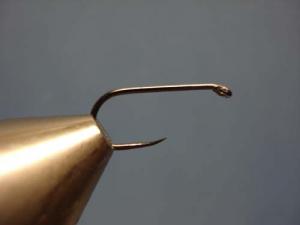
|
Place hook firmly in your vise. |
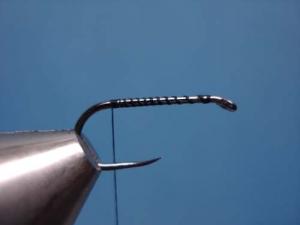
|
Lay a base of thread, ending at the rear. |
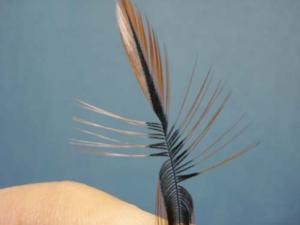
|
Select a brown furnace hackle and separate-out a few barbs.
Note that for the tail and hackle I have elected to use a rooster feather as opposed to the original hen dressing. My selection is personal. In these situations I feel that the wispy collar will still move plenty, yet the stiffer barbs will push more water. I also prefer the natural sheen of a rooster feather over a hen in many stillwater applications. |
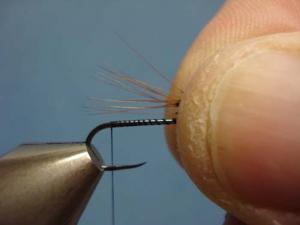
|
Remove them so that the tips are even and measure them to be equal to the length of the hook. |
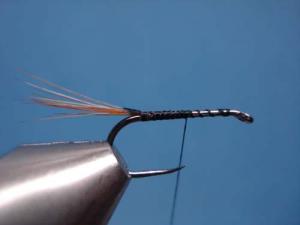
|
Tie them in at the rear. Secure the butts to the middle of the shank-this places your thread in position to attach the wire. |
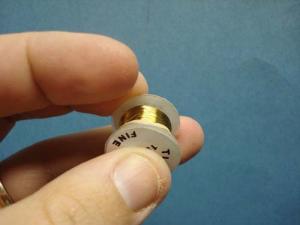
|
Find some fine gold wire and remove a section. |
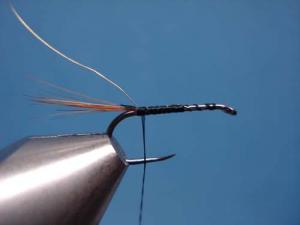
|
Secure it to the far side of the hook and bind it to the rear. |
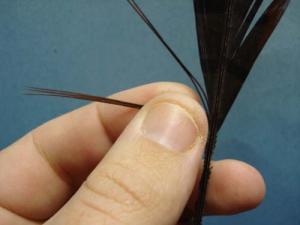
|
From a cock pheasant tail, select three fibers. |
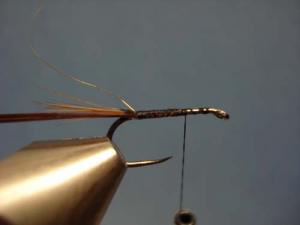
|
Bind them by the tips to the hook and secure them back to the tail. Advance your thread forward to the 1/4 mark. |
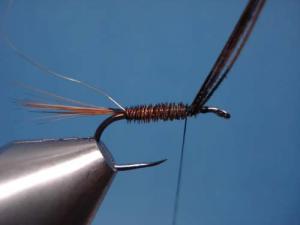
|
Wrap the PT fibers forward, if you use a rotary vise please try the rotary feature here as it makes life so much easier and you will find that the PT fibers twist on themselves as you crank. Wrap to the tying thread and secure. |
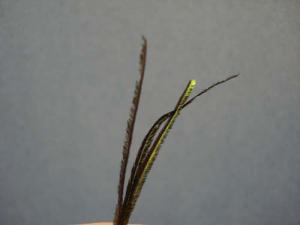
|
Select a few peacock herls and roughly align the tips. |
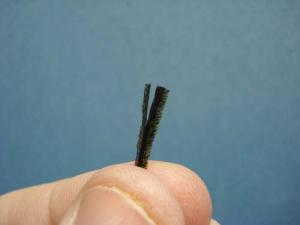
|
Lop-off the top inch or so where the herls are most likely to break. |
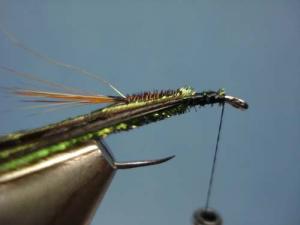
|
Secure ahead of the PT body. |

|
Wrap to just behind the eye and secure. |
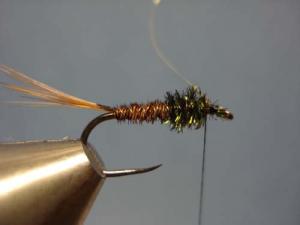
|
Counter-rib the entire body with the gold wire in open and even turns. |
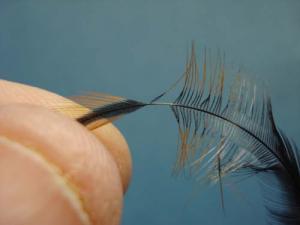
|
Select another furnace hackle whose barbs are 2-times the hook's gap in length. Remove the basal fuzz and leave a short section of stem naked. |
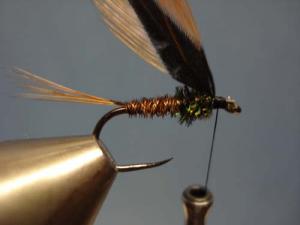
|
Secure the feather by the naked portion of the stem just behind the eye. |
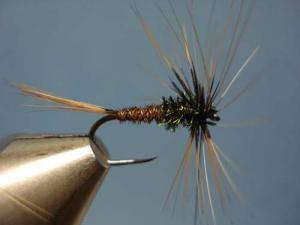
|
Make two wraps and tie-off. |

|
Pull everything back to expose the head region. |
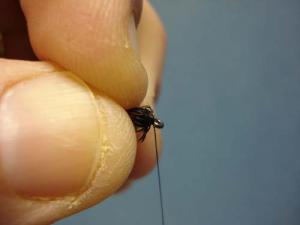
|
Wrap a small neat head, with a few turns back over the hackle to force them slightly to the rear. |
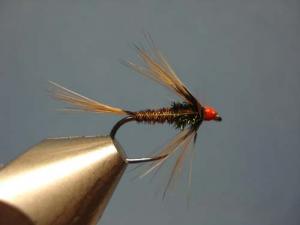
|
Whip finish the black thread and clip. Next, I like to come over the black head with a fluorescent red thread creating a "hot spot" that seems to make this pattern, and many others, even more effective.Whip finish this, clip and you have a completed PT Cruncher! |




















